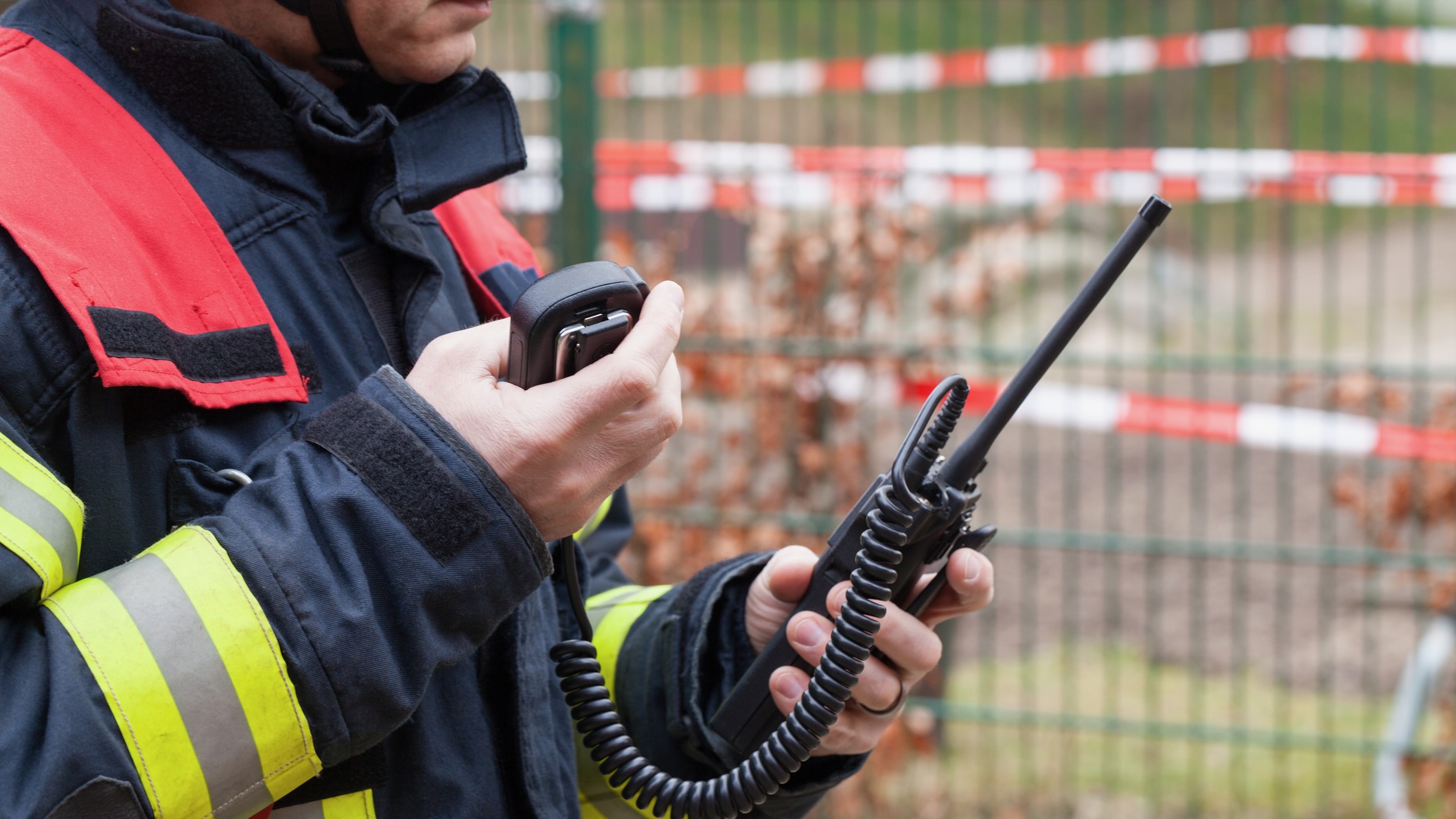What’s that up there? (page 2)
AM: still used by several dozen pubcasters
AM radio uses the low frequencies where radio began, which have much longer wavelengths. While FM antennas are relatively small and mounted high on towers, AM’s longer wavelengths use the entire tower as an antenna, along with a network of underground wires that typically surround the tower in a circle as wide as the tower is high.
Experts in the black art of AM facility design recommend that AM towers’ height be a precise fraction, such as one-quarter, of the station’s wavelength so that the tower will resonate with the frequency. Stations with lower frequencies tend to have higher towers.
Old-timer KOAC in Corvallis, Ore. (right) uses two towers to transmit one signal. Other AM stations use several towers spaced in formation over many acres. KOAC luckily has extensive space on an experimental farm at Oregon State University.
Most AM stations are required to use directional antennas
— because AM signals, especially at night, can bounce thousands of miles off the ionosphere. Directional antennas mini-mize interference with other stations using the same frequency in other regions.
If a directional signal is required, multiple towers are laid out in patterns, as in the case of the venerable WOSU in Columbus, Ohio. While its AM signal covers much of the state during the day from a non-directional tower on the Ohio State University golf course, it must avoid nighttime interference with a Fort Worth, Texas, station that also uses 820 kHz. For the nighttime, WOSU added a separate six-tower site south of Columbus (below) in the 1980s, and it reduces power to 790 watts at night. Its signal also must be tightly restricted to the city of Columbus and northward, missing much of the western suburbs. It’s little wonder that WOSU recently bought a second FM signal to extend the reach of its news programming on the AM channel (Current, Aug. 9, 2010).
To page 1: FM and TV
Fybush also edits the industry newsletters NorthEast Radio Watch and The Radio Journal, and he consults with broadcasters on signal expansion and strategic acquisitions.









